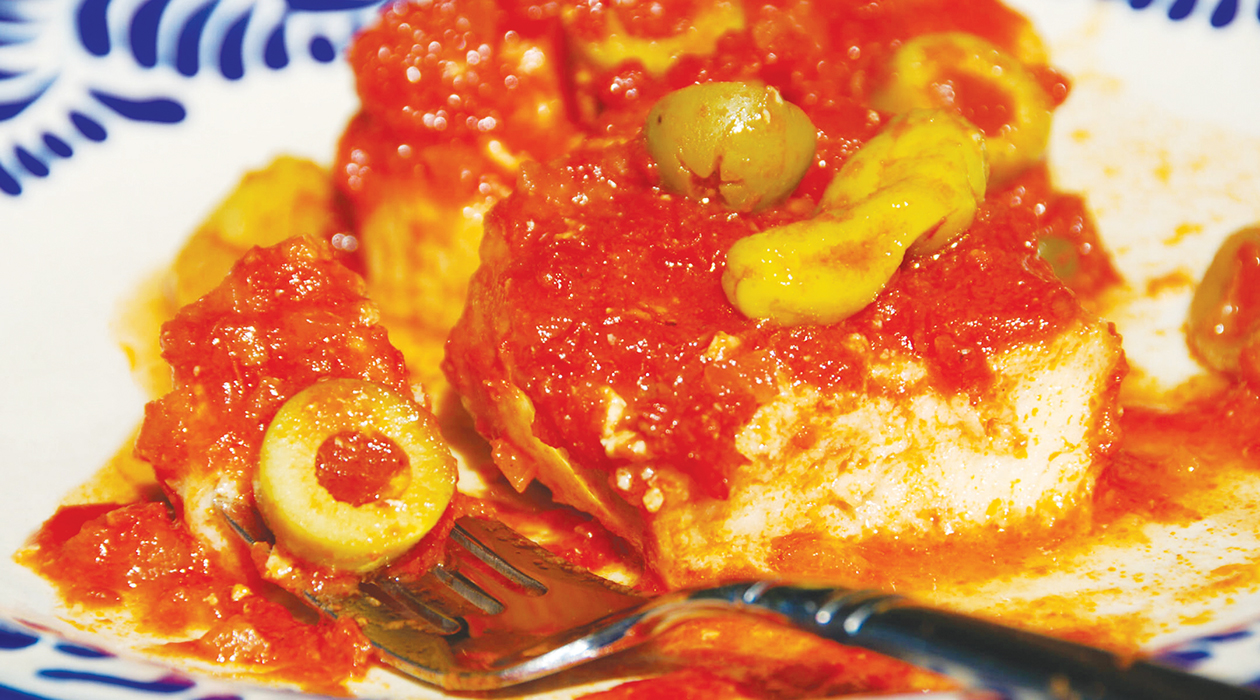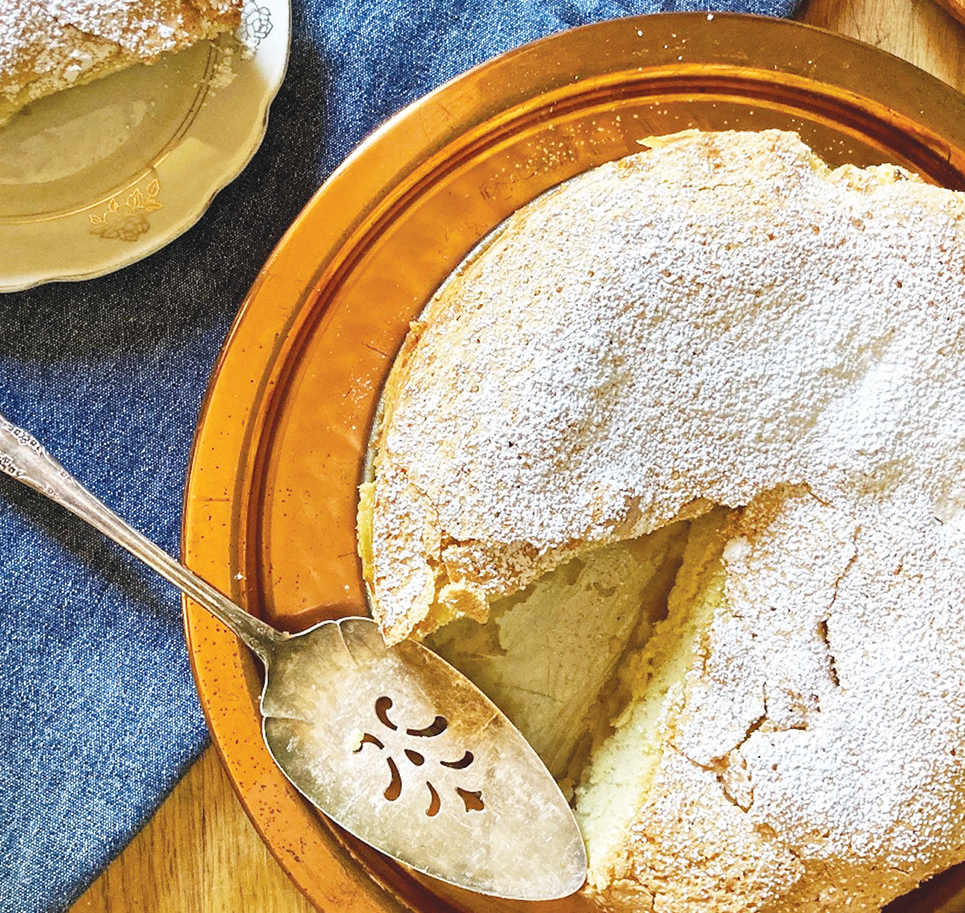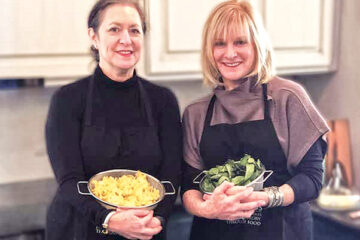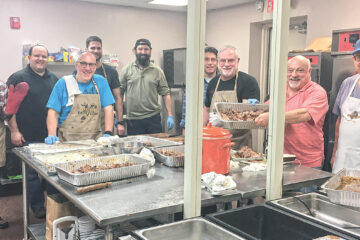What chefs around the world are making this Rosh Hashanah
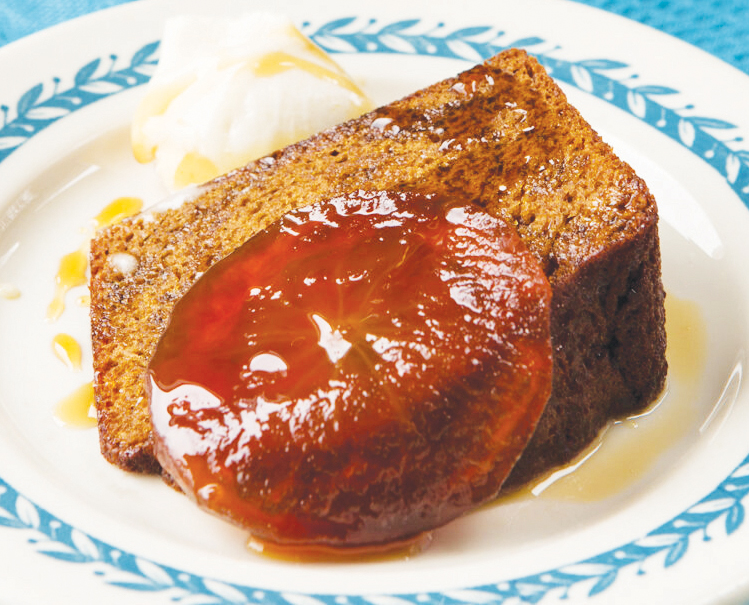
By Rachel Ringler, The Nosher
We asked five noted chefs and food writers what they will serve at home to mark the Jewish New Year, and (spoiler alert) they all plan to weave symbols of sweetness — hallmarks of the holiday — into their menus. Long live apples and honey! But the apples may be in the form of a confit, and the honey might be replaced by silan (date  syrup). And in place of brisket and Manischewitz, consider grilled vegetables and an aperitif.
syrup). And in place of brisket and Manischewitz, consider grilled vegetables and an aperitif.
Adeena Sussman
Israel-based food writer Adeena Sussman, author of Sababa, will serve a sticky, sheet pan chicken made with honey followed by her grandmother’s honey cake. To kick off the holiday meal, her Pomegroni — like a Negroni, but with fresh pomegranate juice substituted for Campari. Pomegranates are in season in Israel in September, and are often incorporated into the holiday meal.
Pomegroni
Yields two cocktails
6 oz. (¾ cup) pomegranate juice
2 oz. (¼ cup) sweet white vermouth or Lillet
2 oz. (¼ cup) dry gin
Generous splash Angostura bitters
Blood orange or other orange wheels
1. In an ice-filled cocktail shaker, vigorously shake the pomegranate juice, vermouth, gin, and bitters. Pour into two ice-filled rocks glasses, add more bitters to taste, and garnish with orange wheels. The recipe can be multiplied (minus the ice) and stored in a pitcher for up to one week and can be freshened with more bitters as needed.
Itamar Srulovich
London-based Itamar Srulovich — podcast host, cookbook author, and co-founder of the Honey & Co. mini-empire — holds an “orphans’ Rosh Hashanah” each year with his wife and partner, Sarit Packer, for friends who don’t have a New Year celebration of their own.
“One thing we never miss out on is apples and honey,” said Srulovich. The couple samples at least a dozen types of honey and several varieties of apples.
Srulovich offers a recipe for grilled pumpkin, apples, and chestnuts that he discovered during his travels in Turkey, cooked on an outdoor grill (or charred in the oven).
Grilled Pumpkins, Apples & Chestnuts
Reproduced from Chasing Smoke: Cooking Over Fire Around the Levant by Sarit Packer & Itamar Srulovich (2021, Pavilion)
Serves four as a starter or six as a side
1 small pumpkin or 2 small onion squash
2 Golden Delicious or Pink Lady apples
2 Tbsp. olive oil
1 tsp. sea salt
½ tsp. freshly ground black pepper
12 chestnuts
1 head of red radicchio or red endive
For the dressing:
juice of 1 orange
2 Tbsp. cider vinegar
2-inch piece of fresh ginger, peeled and grated
2 Tbsp. dried barberries (or you can use dried currants)
1 Tbsp. honey
2 Tbsp. olive oil
Mix all the dressing ingredients together and set aside until you are ready to serve. If you can, make it at least one hour in advance of serving, for the best flavor.
Cut the pumpkin into thick slices or wedges (no need to peel), remove the seeds and place on a baking tray. Slice the apples into 1-inch thick rounds (cut through the core) and add to the tray. Drizzle with the olive oil and season with the sea salt and pepper. Remove from the tray and place the pumpkin and apple slices on a hot grill to char for about three to four minutes on each side, then return them to the oily tray.
Slit the chestnuts carefully with a sharp knife so they don’t explode, and place in a mesh tray or colander over the fire to roast. Shake the tray/colander every 30 seconds or so, till the skins crisp and start to open – about 12 to 14 minutes.
Break the radicchio into separate leaves, place on a large platter, and top with the slices of grilled pumpkin and apple. Peel the chestnuts and break them up, scattering the pieces all over the salad, then dress generously and serve.
To cook without a BBQ: Roast the oiled, seasoned pumpkin in a hot oven at 430 degrees for about 20 minutes, then transfer to a griddle pan over a medium-high heat to char for three to four minutes each side. Griddle the oiled and seasoned apples on both sides for the same length of time. Roast the chestnuts in the oven for about 10 minutes until the skins start to open, but don’t forget to score them first.
Pati Jinich
Pati Jinich, cookbook author and host of Pati’s Mexican Table, will try new foods from different parts of the world. If you, too, are looking for something different, Jinich suggests you try her Veracruz gefilte fish. With a piquant, Mexican twist, it celebrates different culinary worlds colliding, inspired by Pati’s grandmother who arrived in Mexico at the port of Veracruz from Poland. Serve it hot with slices of challah and pickles.
Mexican-Style Gefilte Fish
Yields 20 patties
For the fish patties:
1 lb. red snapper fillets, no skin or bones
1 lb. flounder fillets, no skin or bones
½ white onion quartered, about ½ lb.
2 carrots peeled and roughly chopped, about ¼ lb.
3 eggs
½ cup matzah meal
2 tsp. kosher or sea salt, or to taste
½ tsp. ground white pepper, or to taste
For the red sauce:
3 Tbsp. safflower or corn oil
½ cup white onion, chopped
1 28-oz. can crushed tomatoes
3 cups fish broth or water
2 Tbsp. ketchup
1 tsp. kosher or sea salt, or to taste
¼ tsp. ground white pepper or to taste
1 cup manzanilla olives stuffed with pimientos
8 pepperoncini peppers in vinegar brine (chiles güeros en escabeche), or more to taste
2 Tbsp. capers
To prepare the fish patty mixture: Rinse the red snapper and flounder fillets under a thin stream of cool water. Slice into smaller pieces and place in the food processor. Pulse for five to 10 seconds until fish is finely chopped but hasn’t turned into a paste.
Turn fish mixture into a large mixing bowl. Then place the onion, carrots, eggs, matzah meal, salt, and white pepper into same bowl of the food processor. Process until smooth and turn into the fish mixture. Combine thoroughly.
To prepare the red sauce: Heat the oil in a large cooking pot over medium-high heat. Add the chopped onion, and let it cook five to six minutes, stirring, until soft and translucent. Pour the crushed tomatoes into the pot, stir, and let the mix season and thicken for about six minutes. Incorporate three cups water, two tablespoons ketchup, salt, and white pepper. Give it a good stir and bring to a boil. Reduce the heat to low and bring sauce to a gentle simmer. Continue to simmer while you roll the gefilte fish patties.
Place a small bowl with lukewarm water to the side of the simmering tomato broth. Start making the patties. I like to make them about 3 inches long, 2 inches wide, and 1 inch high, in oval shapes. Wet your hands as necessary, so the fish mixture will not stick to your hands.
As you make them, gently slide each patty into the simmering broth. Make sure it is simmering and raise the heat to medium if necessary to keep a steady simmer.
Once you finish making the patties, cover the pot and bring the heat to low. Cook them covered for 25 minutes. Take off the lid, incorporate the manzanilla olives, pepperoncini peppers and capers. Give it a gentle stir and simmer uncovered for 20 more minutes, so the gefilte fish will be thoroughly cooked and the broth will have seasoned and thickened nicely.
Michael Solomonov
Solomonov — chef, restaurateur and cookbook author, known for extolling and preparing Israeli food — will return to his roots this year with his mom’s Honey Cake with Apple Confit. It’s a classic honey cake, moistened with brewed coffee and lots of honey, topped with an elegant apple confit, sweetened with honey, cloves, and vanilla. The confit has savory applications, too. It’s great, he said, served with chopped liver.
Honey Cake with Apple Confit
Yields one loaf
For the cake:
2 ½ cups all–purpose flour
2 heaping tsp. baking soda
1 cup sugar
½ tsp. salt
pinch ground cinnamon
3 large eggs, lightly beaten
1 ¼ cups brewed coffee
2/3 cup honey
6 Tbsp. canola oil
For the apple confit:
3 apples, peeled and sliced thinly crosswise
1 cup sugar
1 Tbsp. honey
2 cinnamon sticks
1 vanilla bean, split
3 cloves
1. For the cake: Preheat the oven to 350 degrees. With a rack in the middle. Line two 5-by-9-inch loaf pans with oiled parchment paper. Combine the flour and baking soda in a bowl and whisk well.
2. In a bowl of a stand mixer, combine the sugar, salt, cinnamon, eggs, coffee, honey, and oil. Mix on low speed until blended. Add the flour mixture and continue mixing just until combined. Divide the batter evenly between the prepared loaf pans. Bake until a toothpick inserted in the center comes out clean, about 30 minutes. Decrease the oven temperature to 275 degrees.
3. For the apples: Toss the apple slices with the sugar, honey, cinnamon, vanilla bean, and cloves. Arrange in a single layer in a large ovenproof skillet or baking pan. Add enough water to just cover the apples. Press a sheet of parchment onto the surface of the water.
4. Cover the skillet tightly with foil, bring to a simmer over medium-high heat, and transfer to the oven. Bake until the apples are just tender, about one hour. Cool to room temperature, transfer to a lidded container, and refrigerate until cold. Serve with the honey cake.
Dorie Greenspan
Dorie Greenspan, food writer and cookbook author, isn’t sure she will prepare a holiday meal. But if she were, she knows exactly how she’d end it: with Szarlotka, a Polish apple cake that straddles the divide between pie and crumble. The crust, she says, “is delicious.” The filling of apples and raisins are the flavors of Rosh Hashanah to her.
Polish Apple Cake
3-4 (1.5 lb.) medium apples, like Granny Smith
juice of ½ a lemon
3 large eggs
1 cup sugar
2 tsp. vanilla extract
¼ tsp. salt
1 cup all-purpose flour
powdered sugar, as needed
1. Preheat the oven to 350 degrees. Grease and line a 9-inch springform pan with parchment paper; you can also use a 9-inch round or square baking pan for this recipe.
2. Peel and core the apples. Cut the apples into 1-inch pieces, about ¼-inch thick. Toss the apples in lemon juice, and then add them to the baking dish.
3. In a large bowl using a hand mixer, or in a stand mixer fitted with the whisk attachment, combine the eggs and sugar. Alternatively, you can beat the eggs and sugar by hand using a whisk. Beat until the eggs are pale, fluffy, and have doubled in size, about three to four minutes. Add the vanilla extract and beat for one more minute.
4. Sift in half the flour and salt to the egg mixture and fold the dry ingredients into the batter. Sift in the remaining flour and salt, and fold them in until they are just incorporated. Be careful to gently fold in the dry ingredients and not to overmix the batter.
5. Pour the batter over the apples in the baking dish. If needed, use a spatula or spoon to smooth the batter over the top so it evenly covers the apples.
6. Bake for 45 to 50 minutes until golden brown and firm on top, or until a cake tester comes out clean. Allow the cake to cool for at least one hour prior to serving.
7. Before serving, sprinkle the cake with powdered sugar. Szarlotka can be made a day in advance and stored covered at room temperature; the crust will soften as it sits.
To read the complete September 2022 Dayton Jewish Observer, click here.




